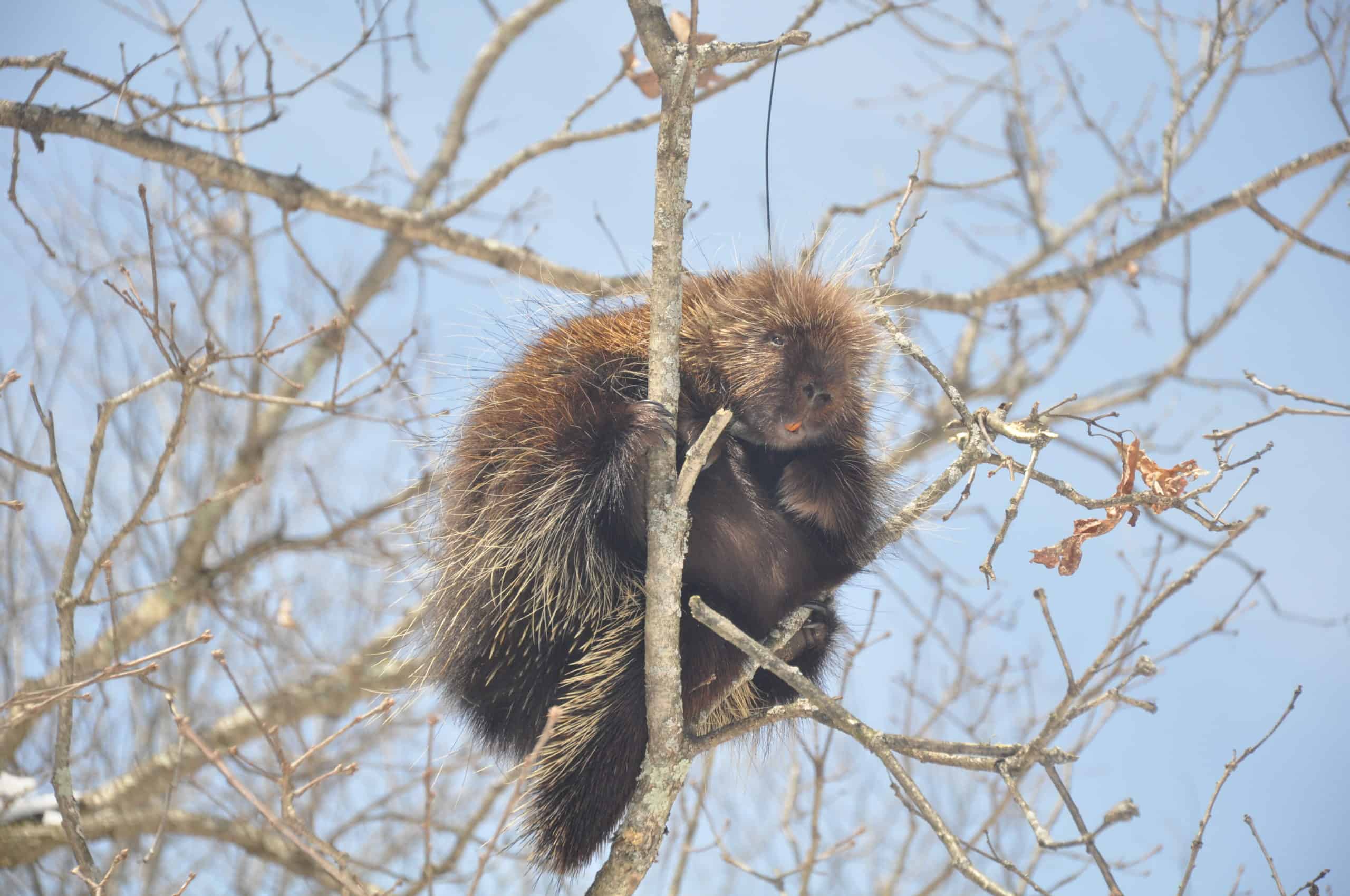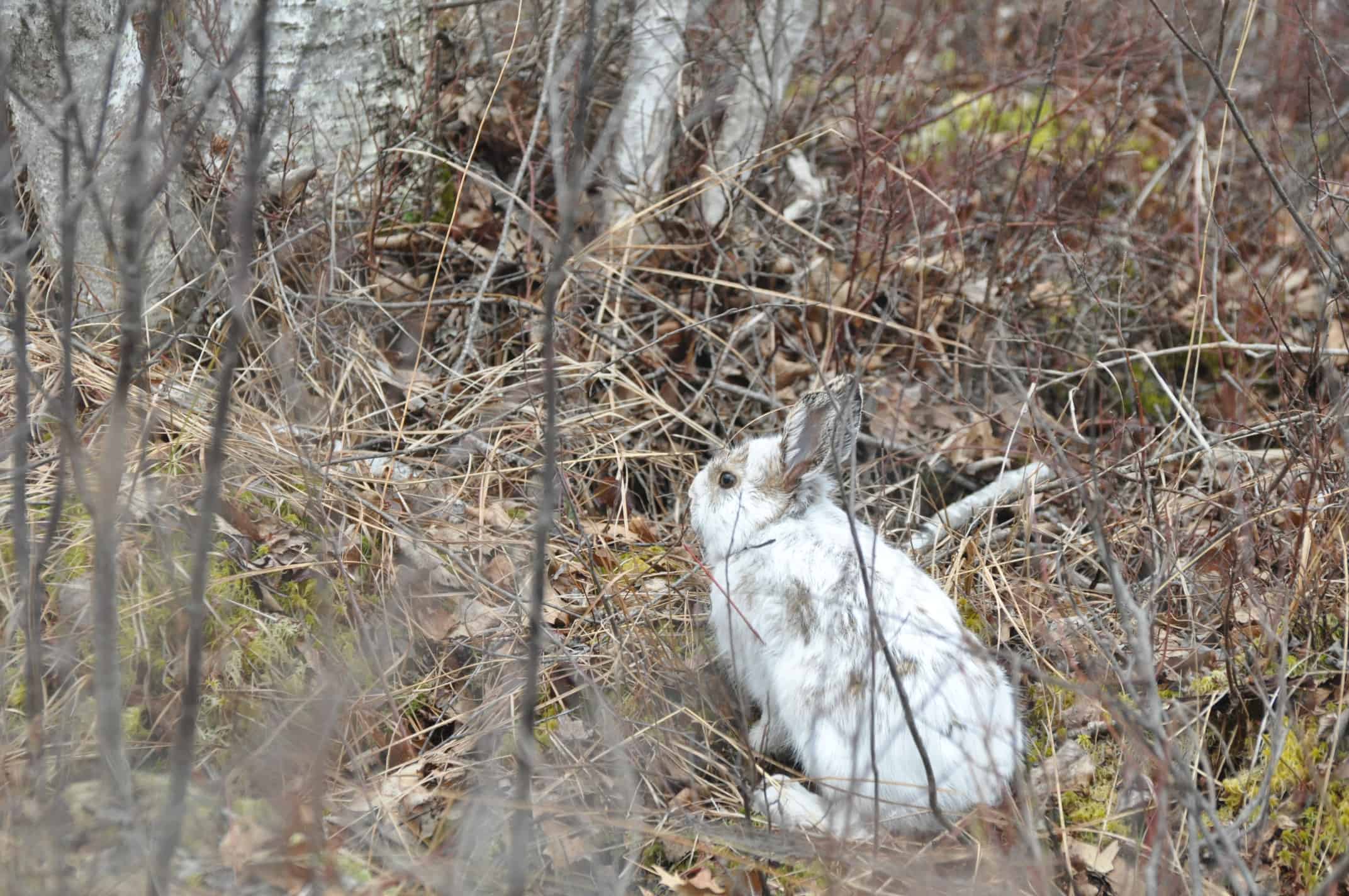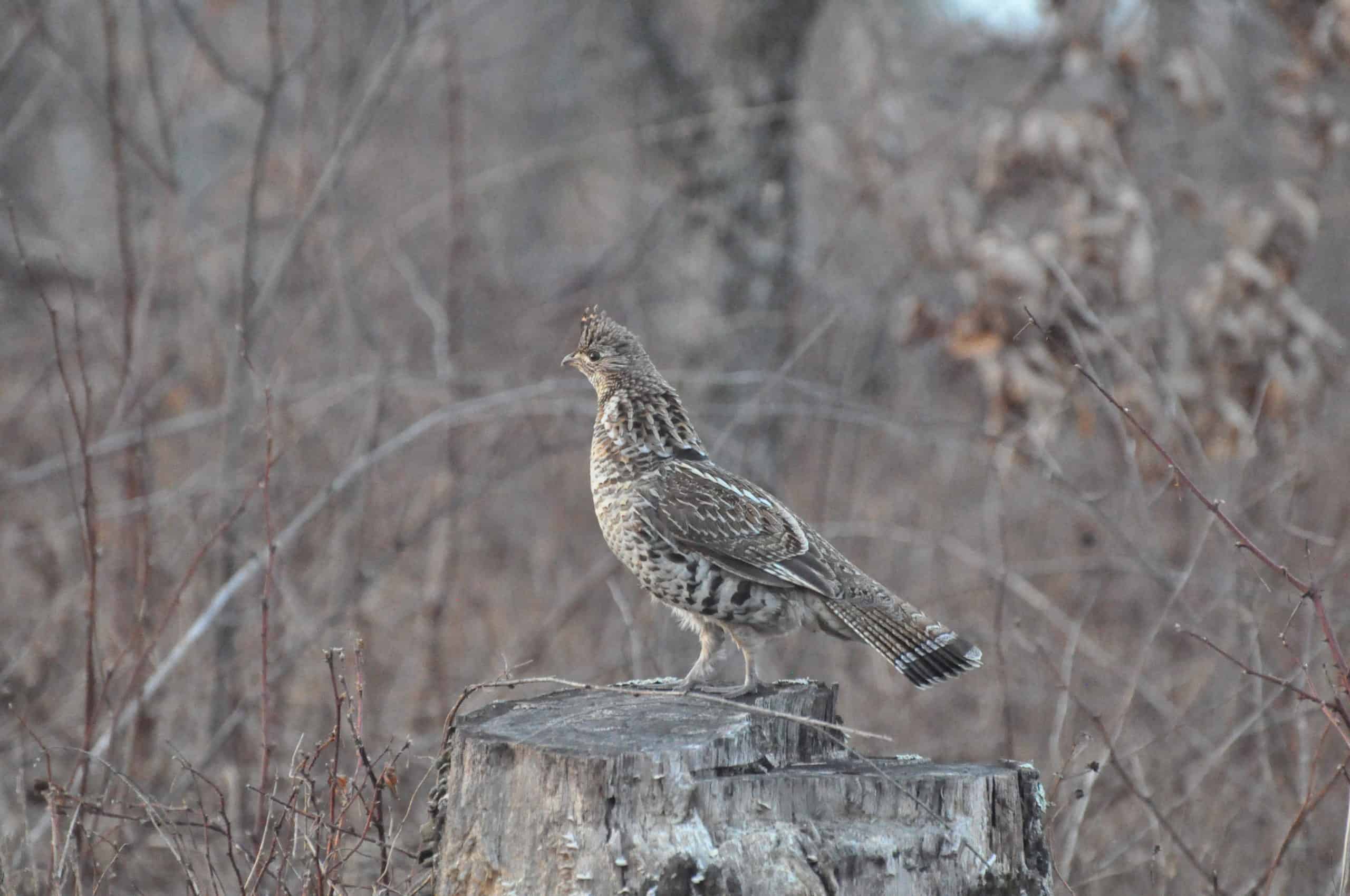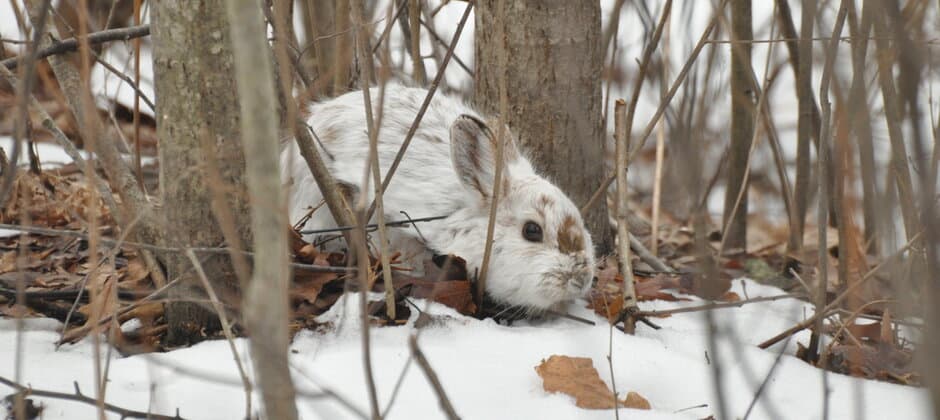Share this article
The impacts of snowshoe hare extirpation cascades through ecosystem
Snowshoe hares have been disappearing from parts of their southern range for some time now. In the Sandhill State Wildlife Area in Wisconsin, the small mammals were extirpated in the early 1990s. In subsequent years, other wildlife also near the southern end of their ranges began to see population effects. Ruffed grouse (Bonasa umbellus) numbers dropped, while the ages of porcupines (Erethizon dorsatum) in their populations began to get older and older, with few juveniles on the landscape.
Researchers wondered if these three things were related—they suspected that the disappearance of snowshoe hares (Lepus americanus) on the landscape due to climate change might have prompted bobcats (Lynx rufus), coyotes (Canis latrans) fishers (Pekania pennanti), and avian predators like great-horned owls (Bubo virginianus) and barred owls (Strix varia) to change their preferred diet to these alternative prey species.
“These indirect effects can be really important,” said Evan Wilson, a postdoctoral researcher in ecology at the University of Michigan. “The loss of a single species can have ripple effects throughout the community.”
But figuring out just what happened wasn’t necessarily easy, since researchers weren’t tracking these relationships back when hares were extirpated from Sandhill. In a study Wilson led published recently in Ecological Monographs as part of his PhD work at the University of Wisconsin-Madison, he and his colleagues engineered a kind of “Back to the Future” move by reintroducing hares to the wildlife area to see what would happen. Would they disappear again? And what would happen to porcupines and grouse with hares back on the landscape?

Porcupine populations began to get older after hares disappeared. Credit: Evan Wilson
The researchers began monitoring the porcupines and grouse in the wildlife area using VHF tracking devices starting in 2015. In the winter of 2017, they captured 100 snowshoe hares from a wild population in the Chequamegon National Forest in Wisconsin, fit them with tracking devices and reintroduced them into the Sandhill State Wildlife Area.
One of the main reasons researchers believe hares blink out in southern parts of their ranges is related to climate change. Snowshoe hares rely on camouflage to hide from predators, changing their coats to white during the winter to hide in the snow, and changing back to brown in the spring and summer to match the dead leaves and substrate on the forest floor. Warmer winter and spring temperatures cause snow to melt at times when it historically would have still been on the ground, but the hares’ physiology hasn’t caught up to these shifts. This amounts to a situation where white hares make easy targets for hungry predators when the snow melts early.
“They experience something called camouflage mismatch,” Wilson said. “They’re extremely conspicuous to predators, and they get absolutely nailed.”
Wilson and his colleagues tracked the color of the hares and the background vegetation. They found that survival among mismatched hares was low when there was little ground cover. But thick vegetation buffered the effects of climate change to some degree even when there was a camouflage mismatch—likely because the hares have other ways to evade predators like hiding in cover.

Snowshoe hares disappeared partly because earlier snow melt caused a mismatch with their winter camouflage coats. Credit: Evan Wilson
Porcupine adults experienced little effect from the reappearance of hares on the landscape. But predation on juveniles—called porcupettes—dropped by 40% after hare reintroduction.
The researchers believe this is due to the maturation of the unique defense system of porcupines. The spines of the adults can be a significant deterrent to predators. But, “when they are smaller, they just aren’t as much of a threat to predators,” Wilson said. “We’re seeing these differential effects for different ages of porcupines.”
Climate change affects porcupines in other ways too—Wilson said that the adults survive better when there is less deep snow around. But the weather conditions need to be just right for the survival of porcupettes in their first year of life. Death rates are high if the spring is too cold, for example.
The reintroduction of hares didn’t have much of an effect on grouse predation. Bobcats, coyotes and fishers might go after hares and porcupines, but their study showed that owls didn’t prey on hares or porcupines that much, instead preying more on ruffed grouse.
As a result, there isn’t much of a relationship between the disappearance of hares and the dropping numbers of ruffed grouse. Wilson noted that the researchers only examined the survival of adult grouse in this study, though. It’s possible that there may be some sort of relationship between the presence of hares and the survival of grouse eggs or chicks.
Other work also shows that the grouse might have been affected by the loss of snow in the area due to climate change. Ruffed grouse burrow in deep snow to hide from predators and to stay warm in the winter, so less snow could be directly affecting the survival of grouse over time.

Ruffed grouse numbers also dropped after the disappearance of snowshoe hares. Credit: Evan Wilson
The reintroduced hare population was relatively short-lived. Of the 100 reintroduced in January 2017, only 20 were left by the end of that year.
Header Image:
Snowshoe hares were extirpated from Sandhill State Wildlife Area in Wisconsin in the early 1990s.
Credit: Evan Wilson








